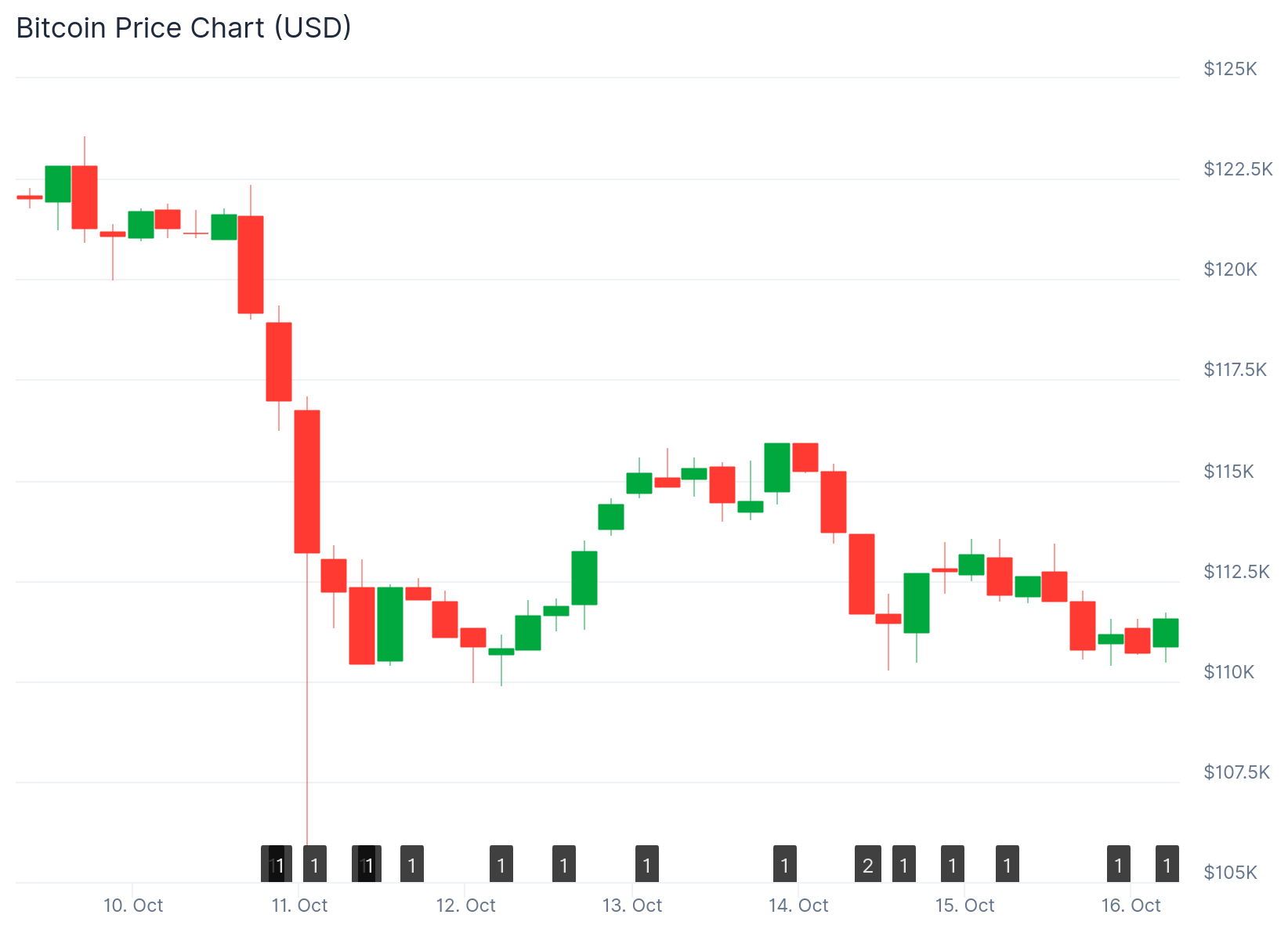TLDR
- Bitcoin fell 15% to $107,000 after Trump announced 100% tariffs on Chinese imports but rebounded to $115,000 within days
- Bitwise CIO Matt Hougan called the crash a “temporary blip” with no fundamental changes to the crypto market
- Crypto ETFs recorded $338 million in net inflows on October 14, led by Fidelity with $287 million combined
- The crash triggered $12 billion in Bitcoin futures liquidations, the largest single-day deleveraging event in USD terms
- Data shows crypto-native traders on Binance drove the selloff while CME institutional positions remained stable
The crypto market experienced a sharp crash last Friday following President Trump’s announcement of 100% tariffs on Chinese imports. Bitcoin dropped 15% while Solana plunged 40% as panic spread across trading platforms.

Matt Hougan, Chief Investment Officer at Bitwise, described the selloff as a “momentary shakeout” rather than a fundamental problem. By Monday morning, Bitcoin had recovered to around $115,000, nearly erasing the weekend losses.
Hougan noted that DeFi protocols like Uniswap, Aave, and Hyperliquid performed well during the volatility. Centralized exchanges like Binance faced temporary disruptions but the overall infrastructure held up. He said such price swings are normal in emerging markets, especially during periods of global uncertainty.
ETF Inflows Show Institutional Confidence
The recovery was backed by strong institutional demand. On October 14, spot Bitcoin and Ethereum ETFs recorded combined net inflows of $338 million according to SoSoValue data.
Bitcoin spot ETFs brought in $102.6 million with Fidelity’s FBTC leading at $133 million. Bitwise’s BITB added $8 million while ARK and 21Shares’ ARKB gained $6.8 million. BlackRock’s IBIT and Valkyrie’s BRRR saw outflows of $44.85 million.
Ethereum ETFs performed even stronger with inflows of $236.22 million. Fidelity’s FETH led with $154.62 million followed by contributions from Grayscale, VanEck, Franklin Templeton, and Bitwise.
These inflows came just days after one of the worst outflow sessions of the year. Investors had pulled $326 million from Bitcoin ETFs and $428.5 million from Ethereum funds during the crash.
Historic Deleveraging Event Hit Crypto Markets
The crash triggered the largest liquidation event in crypto history on a nominal basis. Bitcoin open interest dropped from $70 billion to $58 billion in a single day. This represented a decline from 560,000 BTC to 481,000 BTC in futures positions.
The $12 billion drop marked the largest single-day deleveraging in USD terms. In BTC terms, it was the second-largest on record behind only the March 2020 COVID crash when Bitcoin was trading at $5,000.
The Chicago Mercantile Exchange saw little change during the selloff. CME open interest held steady at around 145,000 BTC, indicating institutional investors weren’t driving the crash.
Binance experienced the bulk of the deleveraging with open interest dropping from $16 billion to $12 billion. The exchange saw positions fall from 130,000 BTC to 105,000 BTC.
The data reveals crypto-native traders caused the crash rather than traditional finance participants. Historically, deleveraging events of this size have often marked market bottoms. Previous examples include the 2020 COVID crash, the 2021 China mining ban selloff, and the FTX collapse in November 2022.
Bitcoin price increased 1.11% in the last 24 hours to reach $112,606. Ethereum rose 4.09% during the same period. Both assets remain below their pre-crash highs but continue showing recovery momentum.



